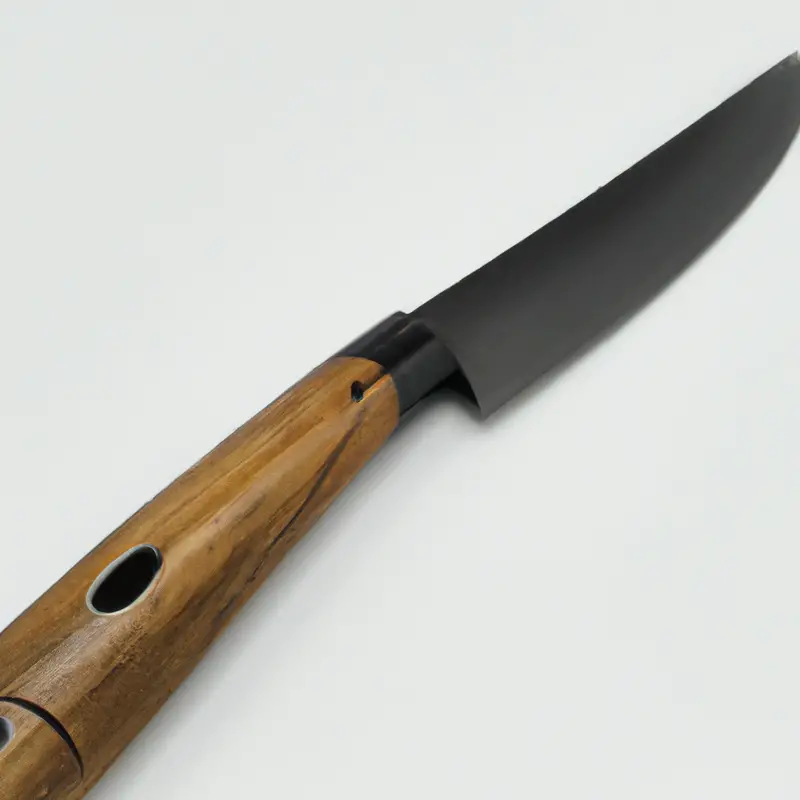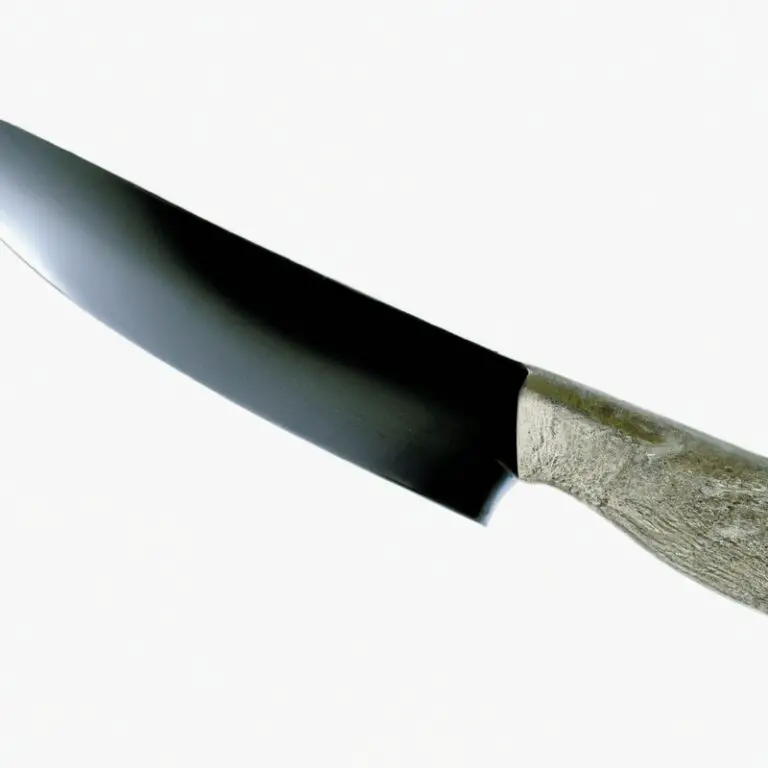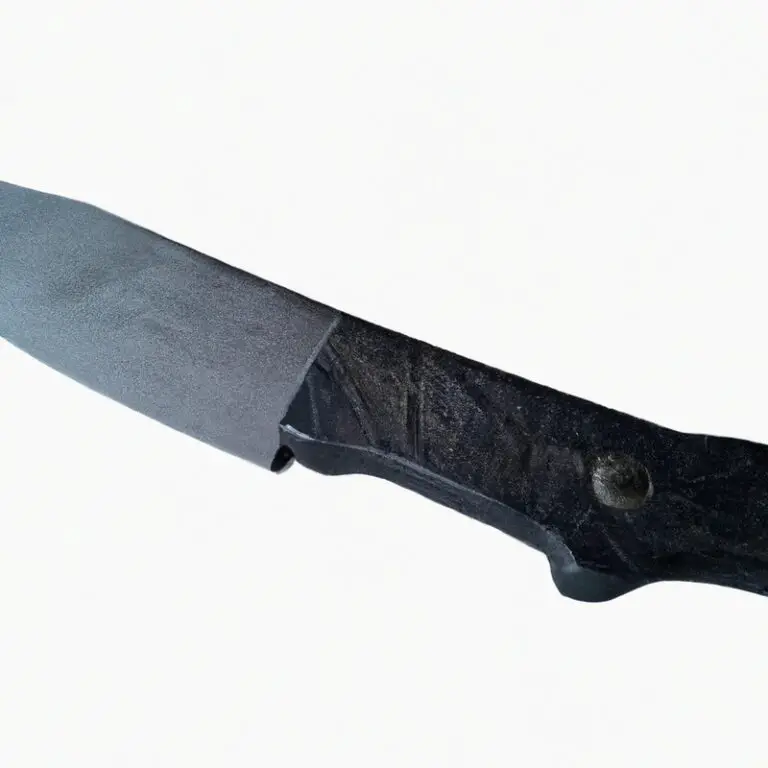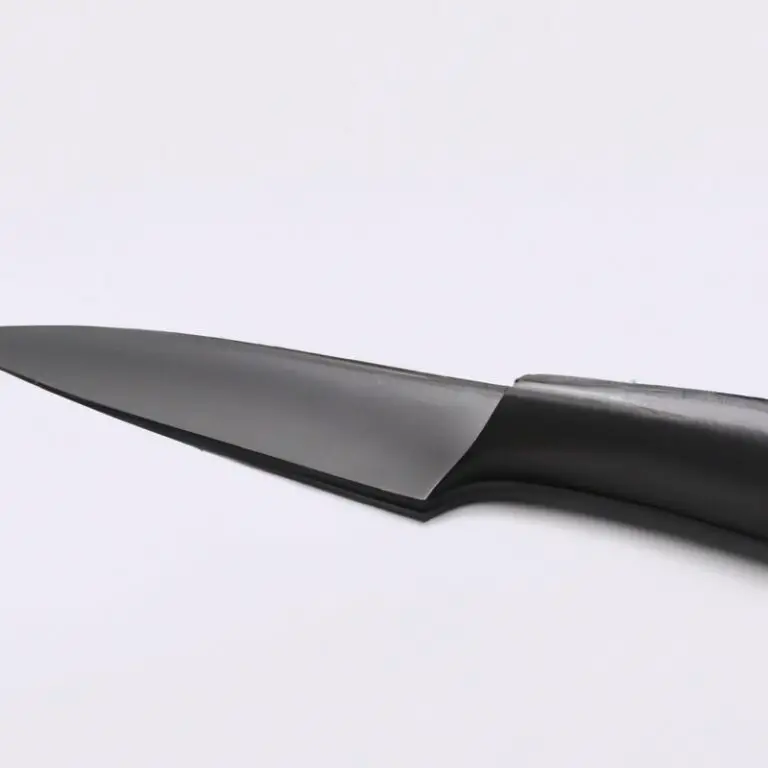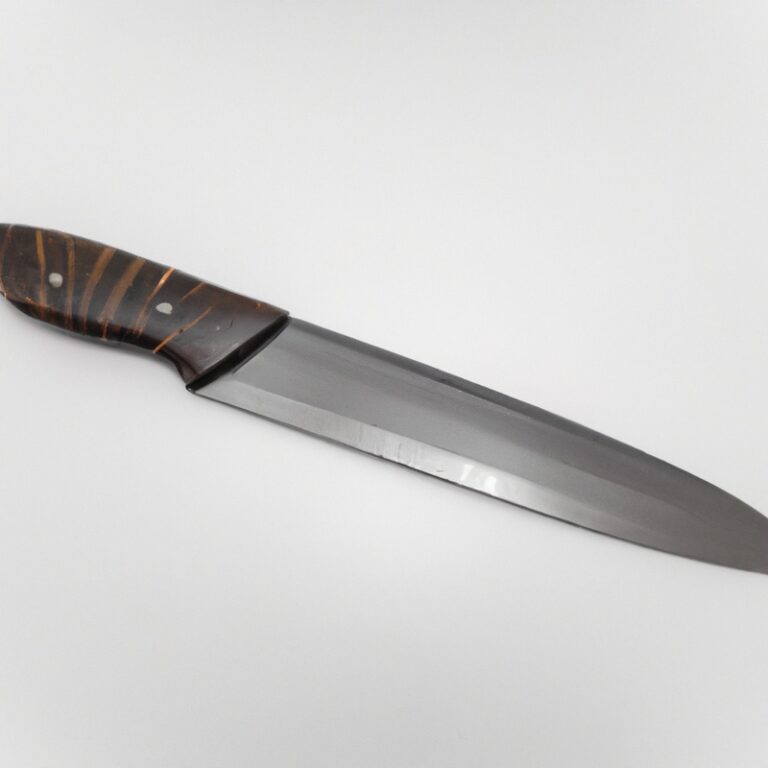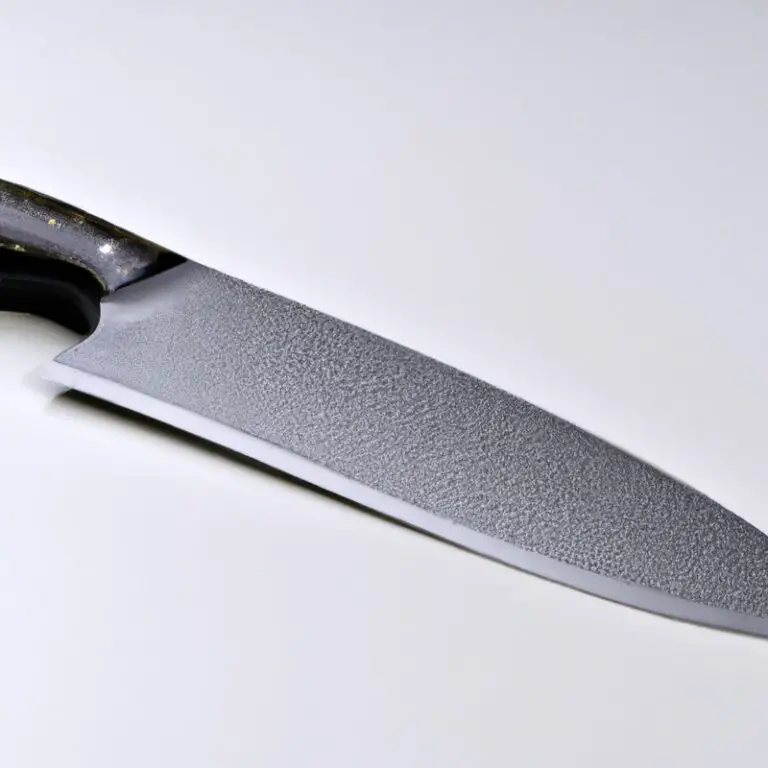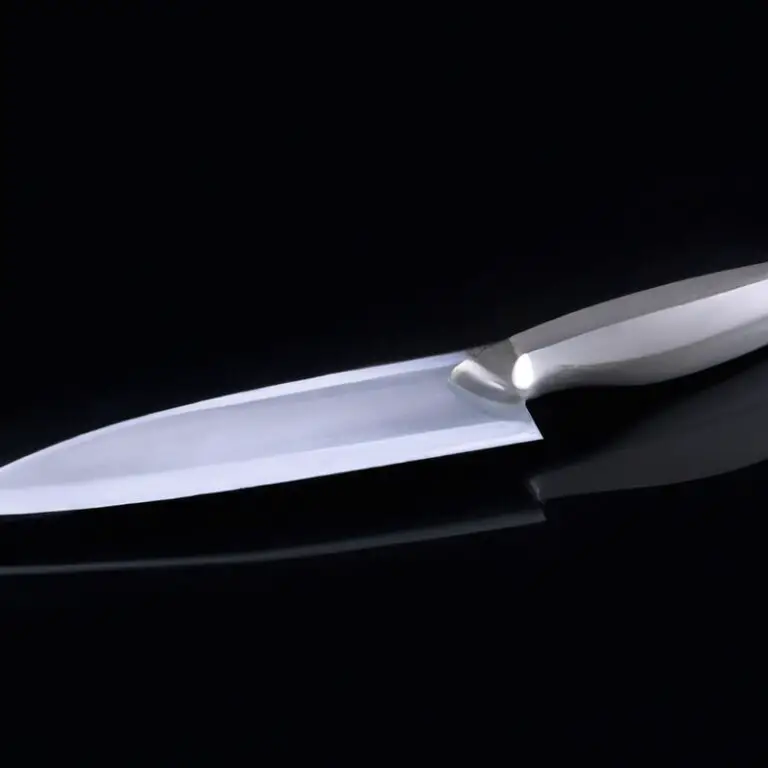What Makes a Gyuto Knife Different From Other Types Of Knives? Superiority
Key Takeaways:
- Gyuto knives are Japanese-style knives that are versatile and designed for precision slicing, dicing, and chopping.
- The thin, sharp blade of a Gyuto knife allows for easy and efficient cutting of meats, vegetables, and fruits.
- The unique shape and design of a Gyuto knife make it an essential tool for professional chefs and home cooks alike.
- When choosing a Gyuto knife, look for high-quality materials and craftsmanship to ensure durability and optimal performance.
When it comes to kitchen knives, there are a plethora of options available in the market. However, the Gyuto knife continues to reign as the go-to choice for chefs and cooking enthusiasts.
But what makes this Japanese-style knife so different from other types of knives?
Is it the blade design or the handle? Maybe the type of steel used?
In this comprehensive guide, we’ll take a deep dive into the world of Gyuto knives and unravel its unique features that have made it an indispensable tool in the kitchen.
Whether you’re a culinary expert or a curious beginner, there’s something to learn for everyone!
| Gyuto Knife | Other Knives |
|---|---|
| Blade Shape | Usually a straighter blade and pointed tip, with a slight curve towards the tip |
| Blade Length | Most commonly between 8 and 10 inches |
| Blade Width | Typically wider than other knives, allowing for more surface area for chopping and slicing |
| Blade Thickness | Thicker at the spine than other knives, tapering to a thin edge |
| Weight | Lighter than other knives, with a balanced weight distribution for precision and control |
| Intended Use | Designed for slicing, dicing, and chopping vegetables, fruits, and boneless meats |
| Not Suitable For | Not recommended for heavy-duty cutting tasks, such as chopping through bones or cutting through frozen foods |
The Origin and Purpose of Gyuto Knives: A Comprehensive Guide
The Gyuto knife originated in Japan and was traditionally used by chefs in Western-style kitchens. The word “Gyuto” translates to “cow sword,” indicating its original purpose of slicing and portioning large cuts of meat.
However, over time its use has expanded to include all types of food preparation, from slicing vegetables to filleting fish.
The blade design of the Gyuto knife is narrower than Western-style knives, allowing for more precision and control in cutting. Additionally, the handle is designed for a comfortable grip and balanced weight distribution.
The steel used in Gyuto knives varies, with high-carbon steel being the most popular for its durability and sharpness retention.
Overall, the Gyuto knife is a versatile and essential tool in any kitchen, suitable for a variety of tasks.
Understanding the Unique Blade Design of the Gyuto Knife
The blade design of the Gyuto knife is one of the key features that sets it apart from other types of knives. The blade is typically taller than a traditional chef’s knife, which makes it easier to use when chopping or slicing large vegetables or meats.
The tip of the blade is also slightly curved, which allows for a rocking motion when cutting.
This feature is particularly useful when chopping herbs or vegetables, as it allows for precise cutting without crushing or bruising the delicate ingredients. Furthermore, the Gyuto knife has a thinner and sharper edge than many Western-style knives, which makes it ideal for precise cuts and intricate slicing.
The blade is usually made of high-quality steel, which ensures both durability and sharpness.
Moreover, the Gyuto knife has a slight taper towards the tip of the blade, which provides an excellent balance between power and agility. This design provides better control and maneuverability when cutting, making it a popular choice for professional chefs and home cooks alike.
The blade design of the Gyuto knife is unique and specifically tailored to meet the needs of chefs and home cooks who require precision and versatility in their cutting tools.
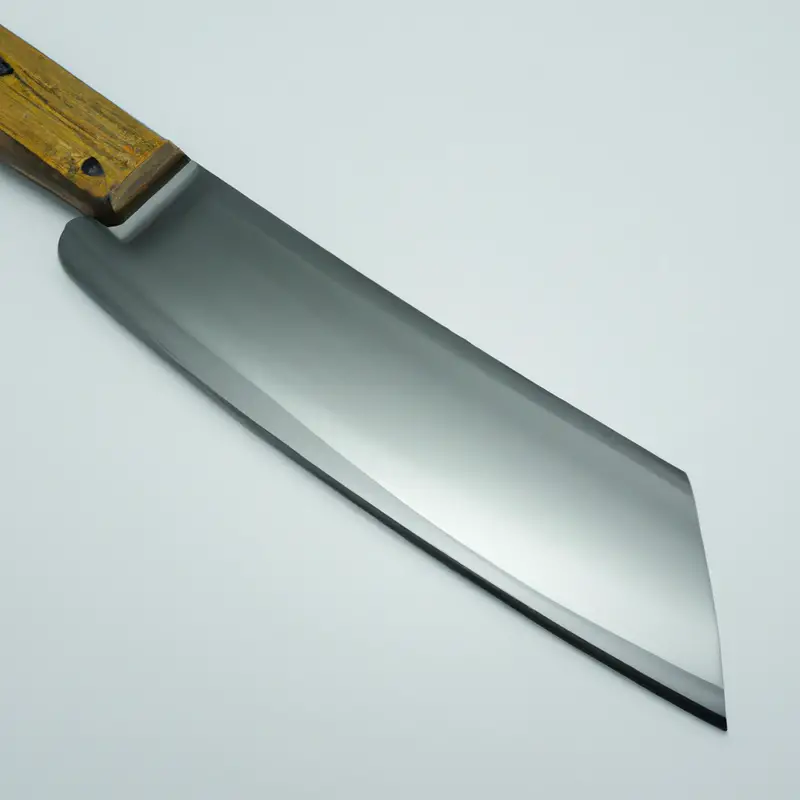
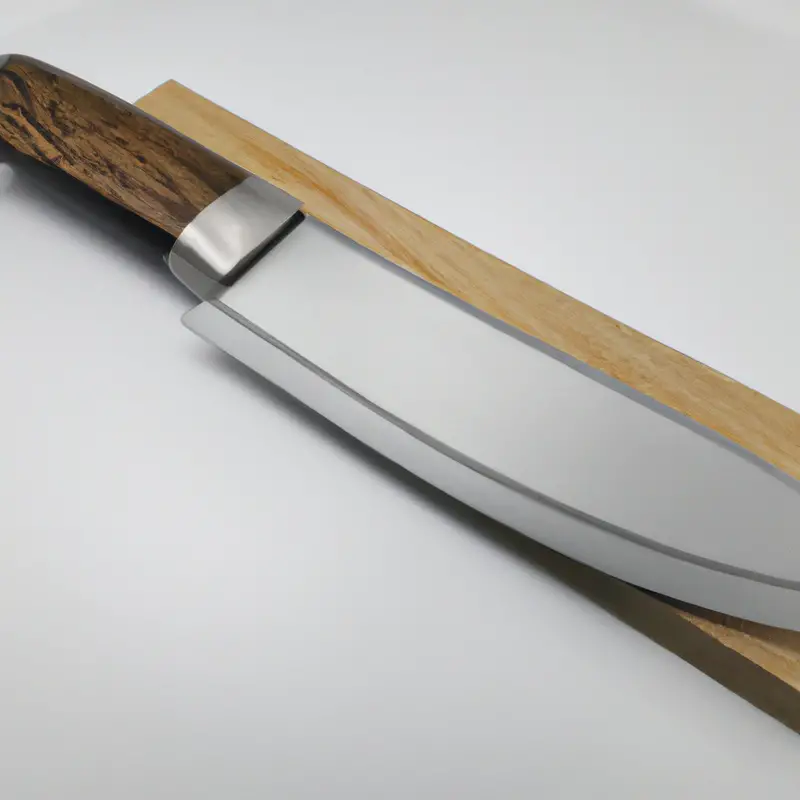
The Importance of Handle Design in Gyuto Knives
The handle design of a Gyuto knife plays a crucial role in its overall performance and comfort. A poorly designed handle can cause discomfort, fatigue, and even injury during extended use.
On the other hand, a well-designed handle can provide a secure grip, reduce fatigue, and increase precision.
Most Gyuto knives feature ergonomic handles that offer a comfortable grip and easy maneuverability. The handle material is also an important factor to consider.
High-quality materials like G10, Micarta, and Pakkawood are commonly used for Gyuto knife handles, as they are durable, moisture-resistant, and provide an excellent grip.
Another crucial aspect of the handle design is the balance of the knife. A well-balanced knife will provide better control and precision, allowing for more accurate cutting techniques.
Additionally, a comfortable handle with a proper balance can reduce hand fatigue, allowing the chef to work longer without experiencing discomfort.
When choosing a Gyuto knife, it is essential to pay attention to the handle design. A well-designed handle can significantly increase the efficiency and accuracy of the knife, while a poor handle can cause discomfort, reduce precision, and lead to injury.
Steel Types Used in Gyuto Knives and How They Affect Performance
The steel used in Gyuto knives is typically high carbon steel (HCS) or stainless steel. HCS is known for its sharpness and durability, but it also requires more maintenance to prevent rusting.
Meanwhile, stainless steel is easier to maintain, but it may not hold its edge as well as HCS.
Other factors that affect a Gyuto knife’s performance include the steel’s hardness and composition. Higher hardness levels can lead to better edge retention, but it may also be more brittle and prone to chipping.
On the other hand, softer steels may require more frequent sharpening but can also maintain their edge for longer if properly maintained.
Ultimately, the choice of steel type depends on personal preferences and intended use. For example, if you’re using your Gyuto knife primarily for slicing vegetables, softer stainless steel may be more suitable.
However, if you’re planning to use it for butchering meat or performing other heavy-duty tasks, harder steel with higher carbon content may be a better choice.
Regardless of the steel type, proper maintenance is crucial for maintaining a Gyuto knife’s performance. Regular sharpening and honing, as well as proper cleaning and storage, can help prolong its lifespan and ensure optimal performance.
Narrow vs. Wide Gyuto Knives: Which One is Right for You?
The width of a Gyuto knife’s blade affects its overall performance and determines the tasks it can handle. Narrow blades, usually between 7 and 8 inches wide, are excellent for precise cutting tasks and detailed work such as trimming and peeling.
They’re also great for slicing through fish or meat with precision.
On the other hand, wide blades, usually between 9 and 12 inches wide, are excellent for chopping, dicing, and slicing vegetables. They can also handle heavier tasks like splitting fish and bone-in meats.
When choosing between a narrow or wide Gyuto knife, consider the tasks you’ll be performing most often in the kitchen.
If you find yourself trimming and peeling more often, a narrow blade might be the right fit for you. But, if you’re working with larger cuts of meat or chopping up lots of vegetables, a wider blade might be a better choice.
Another factor to consider is the size of your hand.
If you have a small hand, a narrow blade might be more comfortable than a wider blade. However, larger hands might find a wider blade easier to handle.
Ultimately, the choice between a narrow or wide Gyuto knife comes down to your personal preferences and the tasks you’ll be performing most often.
It’s always best to take different knives for a test drive to see which one feels most comfortable in your hand.
Honing vs. Sharpening: The Best Way to Maintain a Gyuto Knife
To maintain a Gyuto knife’s sharpness, Honing and Sharpening are two essential methods. Honing should be done frequently to realign the blade’s edge, while sharpening should be done periodically to restore the blade’s sharpness.
Honing involves using a honing steel, a rod of hard steel, or diamond material to sharpen the blade.
On the other hand, sharpening involves grinding away the metal to form a new edge. Experts suggest honing your Gyuto knife every 2-3 uses, while sharpening should be done once or twice a year, depending on usage.
Sharpening can be done with a sharpening stone, electric grinder, or using professional services.
It’s vital to use the correct technique and sharpening angle when sharpening your Gyuto knife, as it can affect the knife’s performance and durability. Honing is a quick maintenance procedure that keeps the blade sharp, while sharpening is more intensive and should be done less frequently.
Regular honing and sharpening can help maintain the Gyuto knife’s sharpness and prolong its life.
Proper care and maintenance are essential to ensure your Gyuto knife performs at its best.
The Versatility of Gyuto Knives: From Slicing Vegetables to Butchering Meat
Gyuto knives are renowned for their versatility in the kitchen. Their thin and sharp blades make them ideal for slicing and chopping vegetables with precision and ease.
At the same time, their sturdy structure enables them to handle tougher tasks like butchering meat and poultry.
Whether you’re a professional chef or a home cook, a good Gyuto knife can handle a wide variety of kitchen tasks. With proper care and maintenance, a Gyuto knife can last for many years, making it a worthwhile investment for any kitchen.
Comparing Gyuto Knives to Other Japanese-style Knives: What Sets Them Apart
Gyuto knives are often compared to other Japanese-style knives, but what sets them apart is their overall versatility. While other Japanese knives have specific purposes, such as the Nakiri for vegetables or the Yanagiba for fish, Gyuto knives can handle a variety of tasks.
Compared to the Santoku knife, another popular Japanese-style knife, a Gyuto knife has a longer and thinner blade, allowing for more precise cuts.
Additionally, the curved edge of a Gyuto knife allows for a rocking motion while chopping, making it easier to use. Compared to Western-style knives, Gyuto knives have a more lightweight and balanced design, making them more comfortable to use for long periods.
Overall, a Gyuto knife’s combination of versatility, precision, and comfort make it a top choice for both professional and home cooks looking for a reliable all-purpose knife.
Mastering the Art of Chopping with a Gyuto Knife: Tips and Techniques for Beginners
To master the art of chopping with a Gyuto knife, beginners should follow some essential tips and techniques. Firstly, keep the knife sharp, as a dull blade may slip causing injury.
Secondly, maintain a proper grip on the handle, holding it with your dominant hand and placing your other hand on the blade for support while cutting.
Thirdly, use the “pinch grip” technique, where you pinch the blade between your thumb and forefinger to have more control over the knife. Fourthly, use a rocking motion while chopping, keeping the tip of the blade in contact with the cutting board to chop vegetables and meats evenly.
Fifthly, practice using a honing rod to straighten out the blade’s edge between sharpening sessions.
Lastly, always keep the blade clean and dry after use. With practice, these techniques and tips can help beginners master the art of chopping with a Gyuto knife effectively.
Essential Care and Maintenance Tips for Your Gyuto Knife
Proper care and maintenance of your Gyuto knife is crucial in ensuring its longevity and performance. Here are some essential tips to keep in mind:
- Hand wash your knife with warm soapy water after each use.
- Dry your knife immediately with a towel to prevent rust and corrosion.
- Avoid cutting hard objects like bones and frozen foods as they can damage the blade edge.
- Use a honing rod to straighten the blade edge before each use to maintain sharpness.
- Sharpen your knife regularly with a whetstone or send it to a professional for sharpening when needed.
- Store your knife in a knife block or sheath to prevent unnecessary damage to the blade.
- Avoid putting your knife in the dishwasher as the heat and chemicals can dull and damage the blade edge.
By following these care and maintenance tips, you can ensure that your Gyuto knife stays sharp and in great condition for years to come.
Final Verdict
The Gyuto knife is a versatile and multifunctional knife that stands out from other Japanese-style knives. Its unique blade design and handle shape, along with the various steel types used in its construction, make it a favorite among professional chefs and home cooks alike.
Whether you’re slicing vegetables, chopping meats, or performing intricate cuts, the Gyuto knife provides exceptional performance and precision.
Proper maintenance, including honing and sharpening, is essential for ensuring its longevity. So, if you’re looking to take your culinary skills to the next level, investing in a high-quality Gyuto knife is a wise decision.
With all of the benefits it provides, there’s no doubt that the Gyuto knife is an indispensable tool in any kitchen.
Trust us, once you’ve experienced the power and precision of this remarkable knife, you’ll never go back.

